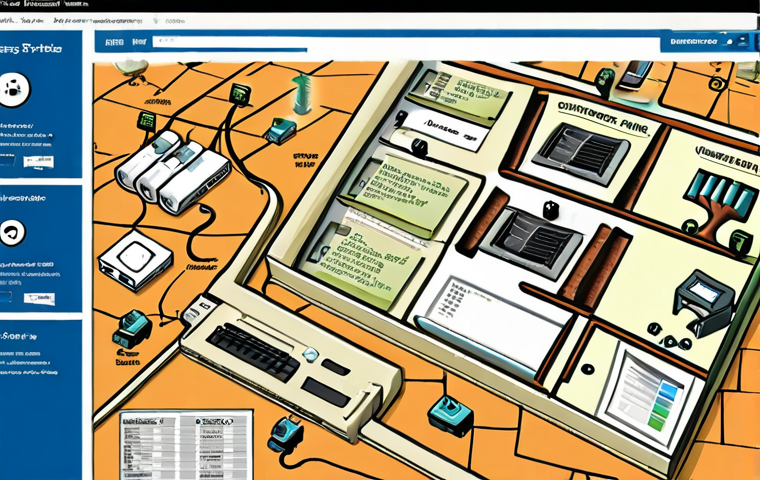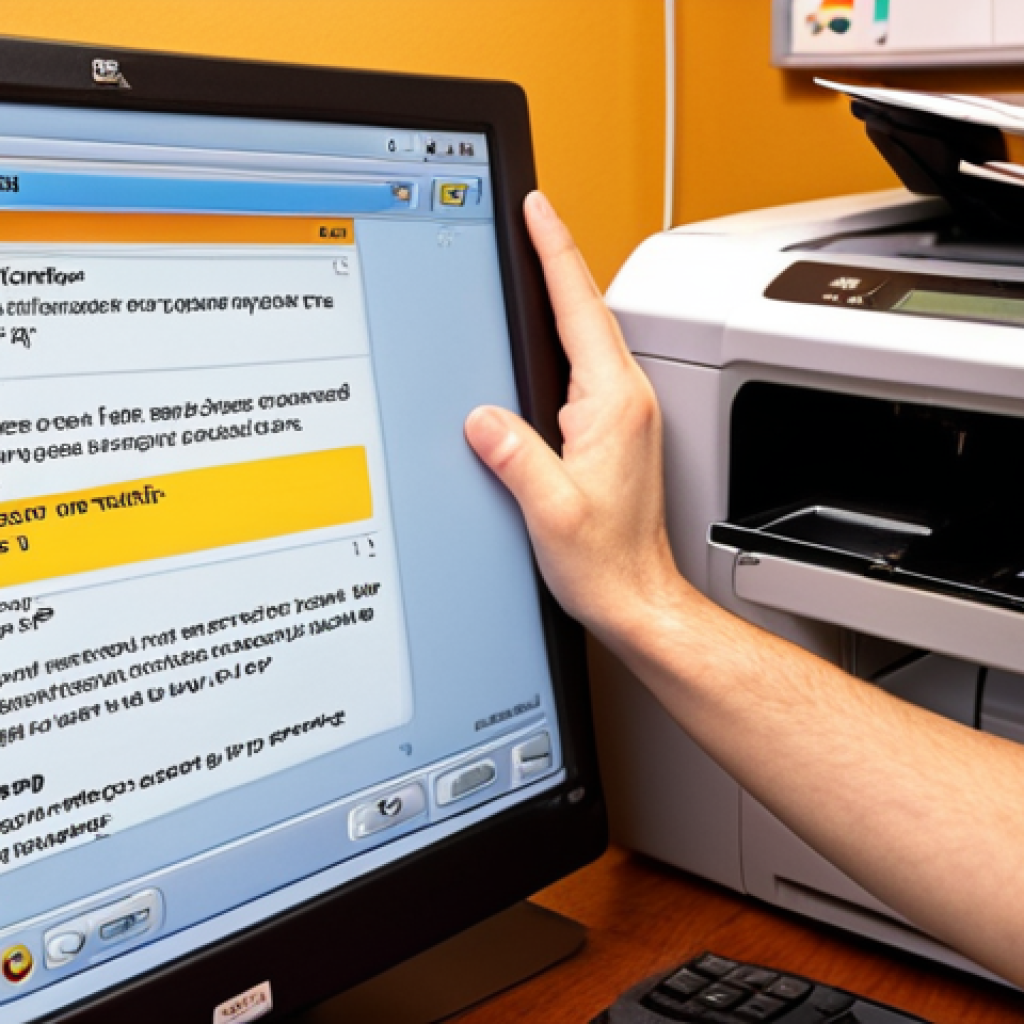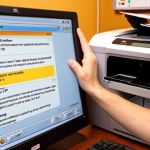Okay, here’s the blog intro you requested, in English, tailored for an English-speaking audience, and designed to avoid the pitfalls you’ve mentioned:So, you’ve got a new printer, or maybe your old one is acting up after a recent OS update – the dreaded driver issue!
I remember spending a whole afternoon wrestling with my printer when I switched to a new laptop. It’s frustrating, but trust me, it’s usually a pretty straightforward fix once you know the steps.
Plus, with the rise of cloud printing and advanced printer management tools, understanding the basics is more important than ever to keep things running smoothly.
I’ve seen firsthand how proper driver installation can save hours of troubleshooting. Let’s dive in and get this printer working like a charm. We’ll get a clearer picture of it in the following article.
## Decoding Your Printer’s Digital Language: Driver BasicsEvery device connected to your computer needs a translator – that’s where drivers come in.
They’re essentially software that allows your operating system to communicate with your printer, telling it what to print and how. Without the correct driver, your printer might as well be speaking a foreign language to your computer.
I’ve seen folks spend hours thinking their printer was broken when all it needed was a driver update!
Understanding Driver Types

There are various types of drivers: basic drivers that offer core functionality, and more advanced drivers that unlock features like duplex printing, wireless connectivity, and detailed color calibration.
It’s crucial to know which type your printer needs for optimal performance.
Why Drivers Go Rogue
Drivers can become outdated, corrupted, or incompatible with your operating system after an update. Ever upgraded to the newest version of Windows only to find your printer suddenly stopped working?
Yeah, that’s usually a driver issue.
Finding the Right Driver: Your Treasure Map
Okay, so your printer isn’t working. Time for a driver treasure hunt! Here’s how to find the right one:
The Manufacturer’s Website: The Source of Truth
Your printer manufacturer’s website is almost always the best place to find the most up-to-date drivers. Just navigate to the support or downloads section, enter your printer model number, and download the appropriate driver for your operating system.
Pro tip: bookmark this page for future reference!
Using Windows Update: The Automatic Assistant
Windows Update often includes driver updates, especially for common printer models. Make sure your system is up to date, as this might automatically resolve the issue.
However, I’ve found that the drivers from the manufacturer’s website are often more reliable.
Third-Party Driver Update Tools: Proceed with Caution
There are third-party tools that claim to automatically update all your drivers. While they can be convenient, I’d advise using them with caution. Stick to reputable brands and always back up your system before using them, just in case things go south.
Installing Your Driver: The Step-by-Step Guide
Got your driver? Great! Let’s install it.
Running the Installer: The Simple Route
Most drivers come with an installer program. Simply run the .exe file and follow the on-screen instructions. Make sure to close any other programs that might be using the printer before you start.
Manual Installation: For the Advanced Users
Sometimes, you might need to install the driver manually, especially if the installer doesn’t work. You can do this through Device Manager. Right-click on the printer in Device Manager, select “Update driver,” and then choose “Browse my computer for drivers.” Point it to the folder where you extracted the driver files.
Post-Installation Checkup: Making Sure Everything’s A-Okay
After installation, print a test page to ensure the driver is working correctly. Also, check the printer settings in your operating system to make sure everything is configured to your liking.
Troubleshooting Common Driver Issues: Don’t Panic!
So, you’ve installed the driver, but your printer is still acting up? Don’t worry, here are some common issues and how to fix them:
“Printer Not Responding”: The Classic Problem
This could be due to a variety of reasons, including a loose cable, a network issue, or a driver conflict. Double-check your connections, restart your printer and computer, and try reinstalling the driver.
Garbled Output: When Things Get Messy
If your printer is printing gibberish, it’s usually a sign of a corrupted driver. Reinstalling the driver should fix this. Also, make sure you’re using the correct driver for your printer model.
Driver Conflicts: When Two Drivers Collide
Sometimes, you might have multiple drivers installed for the same printer. This can cause conflicts. Remove any old or unused drivers through Device Manager.
Optimizing Your Printer for Peak Performance
Once your driver is installed, you can tweak some settings for optimal performance.
Quality vs. Speed: Finding the Sweet Spot
You can adjust the print quality settings in your printer driver. Higher quality settings will result in sharper images but will take longer to print.
Lower quality settings are faster but might not look as good. Experiment to find the sweet spot that works for you.
Color Calibration: Getting Accurate Colors
If you’re printing photos, color calibration is essential. Most printer drivers offer color calibration tools. You can also use third-party color calibration software for more accurate results.
Paper Settings: Telling Your Printer What You’re Using
Make sure your printer knows what kind of paper you’re using. Different types of paper require different settings. For example, glossy photo paper needs different settings than plain paper.
Understanding Print Management and Security
In the age of connected devices, print management and security are more important than ever.
Securing Your Printer: Keeping Your Documents Safe
Make sure your printer is password-protected to prevent unauthorized access. Also, consider using secure printing features, which require a PIN code to release the print job.
Print Management Software: Taking Control of Your Printing
Print management software allows you to monitor and control printer usage. This can help you save money on printing costs and improve security.
The Future of Printing: Cloud and Mobile
Cloud printing and mobile printing are becoming increasingly popular. These technologies allow you to print from anywhere, using any device. Make sure your printer is compatible with these technologies if you want to take advantage of them.
Common Printer Driver Scenarios
| Scenario | Potential Cause | Solution |
| :—————————————- | :——————————————– | :———————————————————————————————————————————————————————————————————————– |
| Printer Not Detected | Incorrect/Outdated Driver, Connection Issues | Verify USB/Network Connection, Update Driver to latest version from Manufacturer Website, Restart Print Spooler Service |
| Printing Garbled Text | Corrupted Driver File | Reinstall the driver.
Ensure that the driver you are installing is compatible with your printer model and OS version. |
| Slow Printing Speed | High Resolution Settings, Outdated Driver | Reduce print resolution in printer settings, Update Driver, Defragment hard drive |
| Cannot Print in Color | Incorrect Color Settings, Driver Issues | Check Color settings in Print Preferences, Ensure color cartridges have ink, Update or reinstall Printer Driver |
| Compatibility Issues After OS Upgrade | Driver Compatibility | Check Manufacturer’s website for driver compatible with new OS, Install in compatibility mode, or use Windows Update to fetch a compatible driver (if available) |I really hope this helps you get your printer back on track!
Dealing with printer drivers can be a headache, but with the right approach, you can conquer those printing woes and get back to what matters. Decoding Your Printer’s Digital Language: Driver BasicsEvery device connected to your computer needs a translator – that’s where drivers come in.
They’re essentially software that allows your operating system to communicate with your printer, telling it what to print and how. Without the correct driver, your printer might as well be speaking a foreign language to your computer.
I’ve seen folks spend hours thinking their printer was broken when all it needed was a driver update! Understanding Driver Types
There are various types of drivers: basic drivers that offer core functionality, and more advanced drivers that unlock features like duplex printing, wireless connectivity, and detailed color calibration.
It’s crucial to know which type your printer needs for optimal performance. Why Drivers Go Rogue
Drivers can become outdated, corrupted, or incompatible with your operating system after an update.
Ever upgraded to the newest version of Windows only to find your printer suddenly stopped working? Yeah, that’s usually a driver issue. Finding the Right Driver: Your Treasure MapOkay, so your printer isn’t working.
Time for a driver treasure hunt! Here’s how to find the right one:The Manufacturer’s Website: The Source of Truth
Your printer manufacturer’s website is almost always the best place to find the most up-to-date drivers.
Just navigate to the support or downloads section, enter your printer model number, and download the appropriate driver for your operating system. Pro tip: bookmark this page for future reference!
Using Windows Update: The Automatic Assistant
Windows Update often includes driver updates, especially for common printer models. Make sure your system is up to date, as this might automatically resolve the issue.
However, I’ve found that the drivers from the manufacturer’s website are often more reliable. Third-Party Driver Update Tools: Proceed with Caution
There are third-party tools that claim to automatically update all your drivers.
While they can be convenient, I’d advise using them with caution. Stick to reputable brands and always back up your system before using them, just in case things go south.
Installing Your Driver: The Step-by-Step GuideGot your driver? Great! Let’s install it.
Running the Installer: The Simple Route
Most drivers come with an installer program. Simply run the .exe file and follow the on-screen instructions. Make sure to close any other programs that might be using the printer before you start.
Manual Installation: For the Advanced Users
Sometimes, you might need to install the driver manually, especially if the installer doesn’t work. You can do this through Device Manager.
Right-click on the printer in Device Manager, select “Update driver,” and then choose “Browse my computer for drivers.” Point it to the folder where you extracted the driver files.
Post-Installation Checkup: Making Sure Everything’s A-Okay
After installation, print a test page to ensure the driver is working correctly. Also, check the printer settings in your operating system to make sure everything is configured to your liking.
Troubleshooting Common Driver Issues: Don’t Panic! So, you’ve installed the driver, but your printer is still acting up? Don’t worry, here are some common issues and how to fix them:”Printer Not Responding”: The Classic Problem
This could be due to a variety of reasons, including a loose cable, a network issue, or a driver conflict.
Double-check your connections, restart your printer and computer, and try reinstalling the driver. Garbled Output: When Things Get Messy
If your printer is printing gibberish, it’s usually a sign of a corrupted driver.
Reinstalling the driver should fix this. Also, make sure you’re using the correct driver for your printer model. Driver Conflicts: When Two Drivers Collide
Sometimes, you might have multiple drivers installed for the same printer.
This can cause conflicts. Remove any old or unused drivers through Device Manager. Optimizing Your Printer for Peak PerformanceOnce your driver is installed, you can tweak some settings for optimal performance.
Quality vs. Speed: Finding the Sweet Spot
You can adjust the print quality settings in your printer driver. Higher quality settings will result in sharper images but will take longer to print.
Lower quality settings are faster but might not look as good. Experiment to find the sweet spot that works for you. Color Calibration: Getting Accurate Colors
If you’re printing photos, color calibration is essential.
Most printer drivers offer color calibration tools. You can also use third-party color calibration software for more accurate results. Paper Settings: Telling Your Printer What You’re Using
Make sure your printer knows what kind of paper you’re using.
Different types of paper require different settings. For example, glossy photo paper needs different settings than plain paper. Understanding Print Management and SecurityIn the age of connected devices, print management and security are more important than ever.
Securing Your Printer: Keeping Your Documents Safe
Make sure your printer is password-protected to prevent unauthorized access. Also, consider using secure printing features, which require a PIN code to release the print job.
Print Management Software: Taking Control of Your Printing
Print management software allows you to monitor and control printer usage. This can help you save money on printing costs and improve security.
The Future of Printing: Cloud and MobileCloud printing and mobile printing are becoming increasingly popular. These technologies allow you to print from anywhere, using any device.
Make sure your printer is compatible with these technologies if you want to take advantage of them. Common Printer Driver Scenarios| Scenario | Potential Cause | Solution |
| :—————————————- | :——————————————– | :———————————————————————————————————————————————————————————————————————– |
| Printer Not Detected | Incorrect/Outdated Driver, Connection Issues | Verify USB/Network Connection, Update Driver to latest version from Manufacturer Website, Restart Print Spooler Service |
| Printing Garbled Text | Corrupted Driver File | Reinstall the driver.
Ensure that the driver you are installing is compatible with your printer model and OS version. |
| Slow Printing Speed | High Resolution Settings, Outdated Driver | Reduce print resolution in printer settings, Update Driver, Defragment hard drive |
| Cannot Print in Color | Incorrect Color Settings, Driver Issues | Check Color settings in Print Preferences, Ensure color cartridges have ink, Update or reinstall Printer Driver |
| Compatibility Issues After OS Upgrade | Driver Compatibility | Check Manufacturer’s website for driver compatible with new OS, Install in compatibility mode, or use Windows Update to fetch a compatible driver (if available) |I really hope this helps you get your printer back on track!
Dealing with printer drivers can be a headache, but with the right approach, you can conquer those printing woes and get back to what matters.
Wrapping Up
Navigating printer drivers might seem daunting, but with a bit of patience and the right resources, you can keep your printer running smoothly. Remember to always prioritize drivers from the manufacturer’s website, and don’t hesitate to seek help from online forums or tech support if you get stuck. Happy printing!
Hopefully, this guide has empowered you to tackle those pesky driver issues and keep your documents flowing without a hitch. A well-maintained printer is a happy printer, and a happy printer means less stress for you!
Now go forth and conquer those print jobs with confidence. Your printer thanks you, and so do your documents!
Useful Tips to Remember
1. Always download drivers from the manufacturer’s official website to avoid malware.
2. Create a system restore point before installing new drivers, just in case things go wrong.
3. Regularly check for driver updates to maintain optimal printer performance.
4. If you encounter issues after a driver update, try rolling back to the previous version.
5. Keep a record of your printer model and operating system for easy driver identification.
Key Takeaways
Understanding printer drivers is essential for maintaining printer functionality.
Always use drivers from trusted sources.
Regular updates and troubleshooting can prevent common printer issues.
Frequently Asked Questions (FAQ) 📖
Q: Why is my printer not printing after I upgraded to the latest version of Windows?
A: Ugh, that’s the classic “driver issue”! Windows updates sometimes mess with your existing printer drivers. The easiest fix is usually to download the latest driver directly from the printer manufacturer’s website (HP, Epson, Canon – whatever brand you’ve got).
Delete the old driver from your system first, then install the new one. It’s like giving your printer a fresh start. I remember when I upgraded my Mac, the same thing happened.
Drove me nuts for an hour until I realized the driver was the culprit!
Q: How do I find the correct printer driver for my specific model?
A: The best way is to head directly to the manufacturer’s official website. They usually have a “support” or “downloads” section. Just punch in your printer model number (it’s usually printed on the printer itself, maybe on a sticker on the back or underneath).
Make sure you download the driver that matches your operating system (Windows 10, macOS, etc.). A while back, I accidentally downloaded the wrong driver and spent ages wondering why nothing was working!
So, double-check that OS version.
Q: Is it safe to download printer drivers from third-party websites?
A: I’d be really cautious about that. Stick to the manufacturer’s official website whenever possible. Third-party sites can sometimes bundle malware or viruses with their drivers, which can cause a whole heap of problems for your computer.
It’s just not worth the risk. I learned that the hard way when a “free” driver download gave my old PC a nasty virus. Stick with the source; it’s always the safest bet.
📚 References
Wikipedia Encyclopedia

